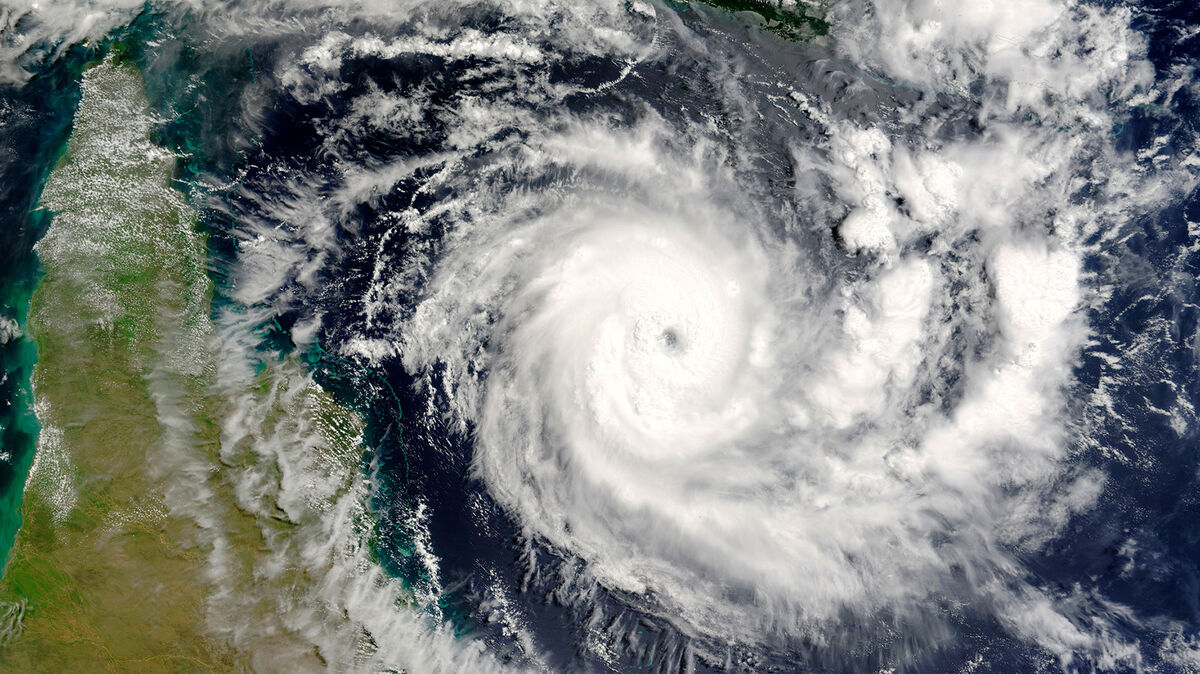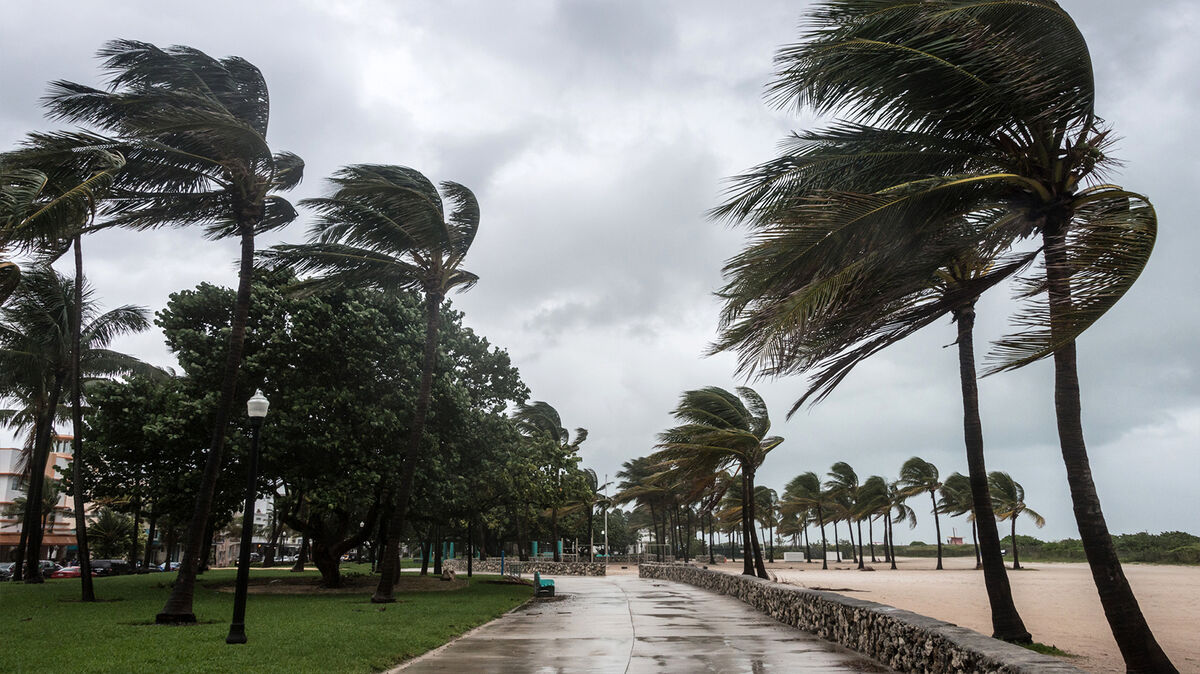
If you get a warning for a severe storm coming your way, you don't take the time to wonder whether it's a hurricane or a typhoon. But it's still important to know the difference between these terms as a reader, writer and safety-conscious person. Keep reading to learn when you should use typhoon vs. hurricane to describe a tropical storm.
Typhoons and Hurricanes Are Both Cyclones
Both typhoons and hurricanes are types of tropical cyclones, which are different from tornadoes. Meteorologists define cyclones as an organized system of clouds and winds that are rotating inwards toward low atmospheric pressure, known as the "eye of the storm." Cyclones occur over tropical waters around the world.
From Storm to Cyclone
Tropical storm systems with low atmospheric pressure (known as atmospheric depression) become cyclones when they create a closed rotation pattern. The progression of storm classification is:
- tropical depression - winds of 0-38 miles per hour
- tropical storm - winds of 39-73 miles per hour
- tropical cyclone - winds of over 74 miles per hour
Once a storm's winds reach 74 miles per hour, it is classified as a typhoon or a hurricane. But what's the difference between hurricane vs. typhoon?

The Difference Depends on Location
The only detail that matters when calling a storm system a typhoon vs. hurricane is where it occurs. A storm known as a typhoon would be called a hurricane in another part of the world.
Places Where Typhoons Occur
You may be more familiar with the term typhoon if you live in Asia or an Oceanic country. Tropical cyclones that occur in the west or northwest areas of the Pacific Ocean, specifically in East Asia and north of Australia, are called typhoons.
Places Where Hurricanes Occur
However, if you live in the coastal United States, Canada, Mexico, Latin America, or the Caribbean Islands, you may know the term hurricane better. Hurricanes occur above the North Atlantic Ocean, in the central North Pacific Ocean (including around the Hawaiian Islands) or in the eastern North Pacific Ocean (including the Gulf of Mexico).
Places Where Tropical Cyclones Occur
If the cyclone takes place outside of these specific ocean areas, it's known as a tropical cyclone. Any tropical storm below the equator, for example, is a tropical cyclone. You'd also call a tropical storm in the Indian Ocean or South Pacific a tropical cyclone.
Tropical Cyclones Intensity Scales
Typhoons and hurricanes also have different ways of rating the intensity of a storm system. This allows authorities to issue the proper warnings and evacuation orders to people who may be affected by tropical cyclones.
Typhoon Intensity Scale
Typhoons are mainly monitored by the Japan Meteorological Agency (JMA), along with the China Meteorological Administration (CMA) and the Philippine Atmospheric, Geophysical and Astronomical Services Administration (PAGASA). The JMA assigns the following ratings:
- Strong Typhoon - winds of maximum 97 mph/156 km/h
- Very Strong Typhoon - winds of maximum 98-120 mph/157–193 km/h
- Violent Typhoon - winds of over 121 mph/190 km/h
The CMA and the PAGASA also use three rating categories:
- Typhoon - winds of maximum 92 mph/150 km/h
- Severe Typhoon - winds of maximum 98-120 mph/157–193 km/h
- Super Typhoon - winds of over 120-140 mph/190-220 km/h
The rating systems differ slightly, but they still provide a basic overview of the three types of typhoons. While a typhoon with winds at 92-97 miles per hour would cause a lot of damage, it's not as catastrophic as a typhoon with winds at 120-140 miles per hour.

Hurricane Intensity Scale
Most countries that monitor hurricanes refer to the Saffir-Simpson Hurricane Wind Scale. It groups hurricanes into five categories based on their sustained wind speeds. The categories are:
- Category 1 - winds of 74-95 mph/119-153 km/h
- Category 2 - winds of 96-110 mph/154-177 km/h
- Category 3 - winds of 111-129 mph/178-208 km/h
- Category 4 - winds of 130-156/209-251 km/h
- Category 5 - winds of over 157 mph/252 km/h
Category 1 hurricanes are roughly equivalent to typhoons in the first rating. Category 2 hurricanes would be the same as Very Strong or Severe Typhoons, while Category 3, 4 and 5 hurricanes (known as major hurricanes) are equivalent to Violent or Super Typhoons.
Word Origins of Typhoon and Hurricane
So if the words mean the exact same thing, why do we use both? The answer comes in the words' origins, which are specific to their regions. The word cyclone comes from the Greek kyklon, meaning "moving in a circle."
The origins of typhoon and hurricane are:
- typhoon - from the Greek tuphōn ("whirlwind"), then the Arabic ṭūfān and the Chinese tai fung ("big wind")
- hurricane - from the Mayan and Taino Huracan (god of wind and storm) and the Carib Huricán (god of evil); later from the Spanish huracán
These climate words originate from the belief systems and observations of native people. They were then translated or adapted into the languages of European explorers as they observed these monstrous cyclones.
The Future of Tropical Storms
Knowing the difference between typhoon vs. hurricane is helpful when studying or writing about cyclical storm systems. However, it's also important to know more about how they start — and why they seem to be increasing in intensity and frequency. Take a look at the impact and possibilities of climate change with these examples of global warming.